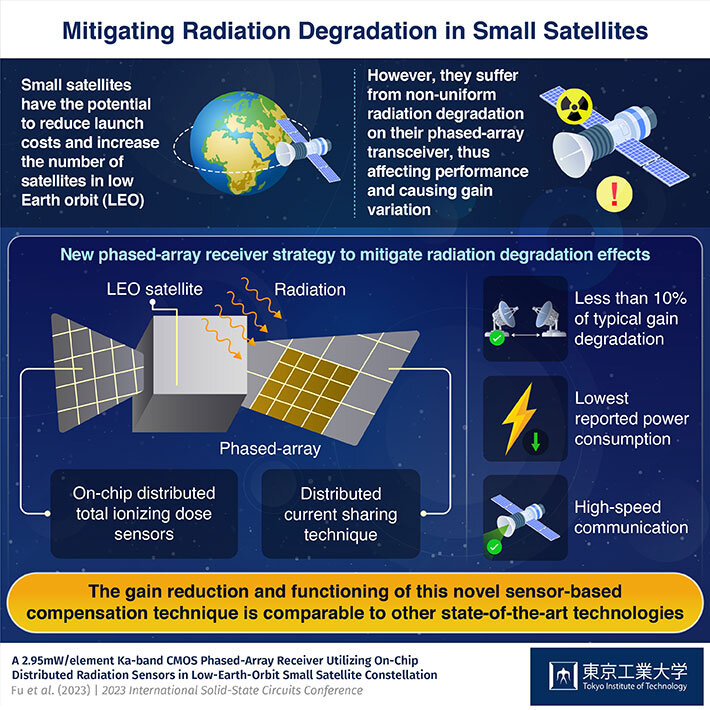Improving the performance of satellites in low earth orbit
On-chip distributed radiation sensors and current-sharing techniques can be used to reduce the impact of radiation on the radio and power consumption of small satellites, respectively, as shown by scientists from Tokyo Tech. Their findings can be used to make small satellites more robust, which can increase the connectivity of networks across the globe.
A database updated in 2022 reported around 4,852 active satellites orbiting the earth. These satellites serve many different purposes in space, from GPS and weather tracking to military reconnaissance and early warning systems. Given the wide array of uses for satellites, especially in low Earth orbit (LEO), researchers are constantly trying to develop better ones.
In this regard, small satellites have a lot of potential. They can reduce launch costs and increase the number of satellites in orbit, providing a better network with wider coverage. However, due to their smaller size, these satellites have lesser radiation shield. They also have a deployable membrane attached to the main body for a large phased-array transceiver, which causes non-uniform radiation degradation across the transceiver.
This affects the performance of the satellite’s radio due to the variation in the strength of signal they can sense—also known as gain variation. Thus, there is a need to mitigate radiation degradation to make small satellites more viable.
A team of researchers led by Associate Professor Atsushi Shirane of Tokyo Institute of Technology (Tokyo Tech) have reported a novel phased array receiver strategy to reduce the effects of radiation degradation in these satellites. Their findings have been shared and published in the 2023 International Solid-State Circuits Conference.
Dr. Shirane explains, “We propose a new phased array receiver strategy which involves on-chip distributed radiation sensors and current-sharing techniques. This helps to drastically reduce the effects of radiation degradation on the radio and power consumption.”
The team of researchers found out that in the conventional design of the phased-array transceiver on small satellites, the signal from the main lobe degraded by 3.1 dB in a year due to ionizing radiation. To solve this the researchers created a phased-array transceiver with on-chip distributed radiation sensors. These sensors can detect the gain variation between the chips of the antenna. This was combined with current-sharing techniques to mitigate the gain variation and thus reduce the impact of non-uniform ionizing radiation on the radio and power consumption.
Upon testing this new strategy, the researchers found that it led to less than 10% of the typical gain variation seen in small satellites. The current sharing techniques also brought down the power consumption of the satellite to the lowest reported value. Overall, this strategy was able to reduce the main lobe degradation and bring down gain variation while using a minimal amount of power, solving two major problems faced by existing small satellites.
“Using the distributed on-chip radiation sensors and the current sharing techniques, we were able to drastically reduce the impact of radiation degradation and make the phased-array transceiver more energy efficient. This strategy,” concludes Dr. Shirane, “was found to be comparable to other state-of-the-art technologies at reducing gain variation. Thus, we believe that given its performance and efficiency, our strategy may lead to an even greater number of small satellites in lower Earth orbit, and a more well-connected world.”
Citation:
Improving the performance of satellites in low earth orbit (2023, February 21)
retrieved 21 February 2023
from https://techxplore.com/news/2023-02-satellites-earth-orbit.html
This document is subject to copyright. Apart from any fair dealing for the purpose of private study or research, no
part may be reproduced without the written permission. The content is provided for information purposes only.
For all the latest Technology News Click Here
For the latest news and updates, follow us on Google News.

